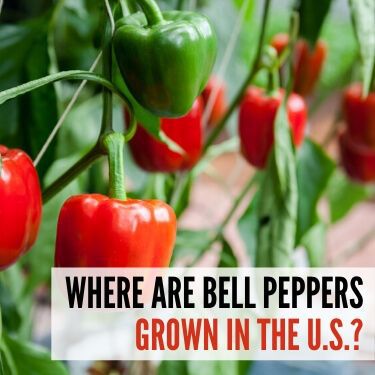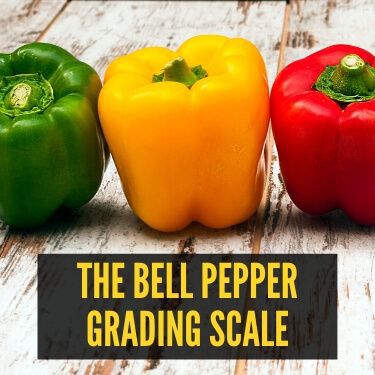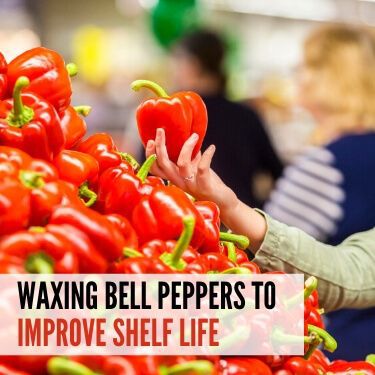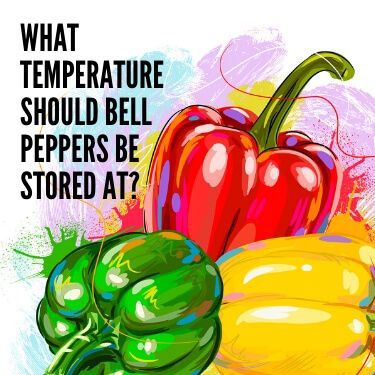Bell peppers are one of the most popular vegetables for a variety of reasons. They’re versatile and can be used in many different kinds of dishes. The pepper plant grows easily and produces a crop that has a sweet and mild flavor enjoyed by many different cultures. Because bell peppers are so popular, it’s interesting to know the process behind their harvest, as well as how bell peppers are transported. From the moment peppers are picked to the moment you choose the perfect pepper for your dinner in the store, there’s a lot of “behind the scenes” work that’s going on! Peppers aren’t grown everywhere throughout the U.S., so a lot of sorting, processing, and transporting needs to be done to get them to your plate.
How are bell peppers transported? Bell peppers are transported in climate controlled shipping containers and should be kept between 44° and 55°F. Peppers are sensitive to ethylene producing fruits like apples, cherries, and peaches and should not be shipped together. Most pepper shipments are delivered using expedited shipping methods.
With that in mind, let’s learn a bit more about bell peppers, including where they can be found, how they’re graded, and how they get to your local supermarket.

While the U.S. ranks 5th in green pepper global production, following China, Mexico, Turkey, and Indonesia, it’s still one of the top crops in the country. Bell peppers need a specific climate for successful growing, and they typically thrive best in areas with warm soil and warmer temperatures. With that being said, not all of the top-growing states for bell peppers have typically warm climates. The top five states for bell pepper production are:
Michigan and North Carolina are also heavy producers of the crop. Growers in states with colder climates have to work a bit harder to keep the pepper crops safe, since the target temperature for growth is about 65-degrees. Thankfully, that can usually be accomplished with the use of black plastic over the soil to keep the area warm without killing off beneficial bacteria.
Most of California and Florida’s bell pepper production is done using raised beds and specialized irrigation systems. If too much moisture builds up within the pepper plants, it can cause fungal diseases to occur, and the crops will be compromised, so it’s very important for growers (especially those in humid climates) to control moisture levels since peppers are sensitive to how much water they receive.
In general, bell peppers can be very forgiving when it comes to ideal harvesting times. Typically, you can expect a healthy crop within 11 weeks of planting/transplanting. The longer they stay on the vine, the sweeter and more mature they will become. Their health benefits also increase, since they’ll contain more Vitamin C as they mature, too. Many bell peppers that mature on the vine will turn red or yellow. But, it’s fine to harvest peppers whether they are still immature or they’ve reached their full size.
Home growers can use sharp scissors or a knife to cut the peppers directly from the plant without causing damage.
Once peppers are harvested, the process isn’t over. In fact, it’s just beginning. Peppers will continue to ripen even after they’re picked. It’s important to cool them down and store them properly to keep them from over-ripening before they hit store shelves. How farmers handle bell peppers once they’re picked is extremely important for the health of the crop and the overall production. Some tips to keep in mind include:
By taking care of the bell peppers immediately after harvesting them, it will allow the produce to stand up better to shipping/transportation, and they’ll have a longer shelf life as they go from the farm to the store to homes across the country.

When it comes to peppers, you may have heard of the Scoville scale, which measures units of heat. The average bell pepper isn’t very high when it comes to Scoville units since they are typically mild and sweet. But, bell peppers have their own grading scale that has little to do with their spiciness, and more to do with their overall characteristics, including their size and color.
U.S. Fancy peppers are considered mature sweet bell peppers which are free from damage or disease. Peppers with this grade are considered “top of the line.” They cannot be less than three inches in diameter or less than 3 ½ inches in length, and their color needs to be at least 90% of that which is advertised.
U.S. No. 1 peppers must have many of the same characteristics as their higher-grade counterparts, including no damage from freezing, no decay, etc. The difference comes from the size and color regulations. Peppers with this grade can’t have a diameter of less than 2 ½ inches or a length of less than 2 ½ inches.
U.S. No. 2 peppers also need to be mature sweet peppers, but the characteristics can vary slightly. They are allowed to be slightly misshapen, and don’t have specific size requirements.
The grading scale of peppers is important when you’re looking for the best of the best. Farmers who inspect their peppers before shipping them out during peak shipping season obviously want to sell their best products because they can get a better price. But, there’s nothing wrong with No. 2 peppers, especially if they’re going to be used for commercial products or are going to be chopped/cut for specific dishes.
From harvest to consumption, bell peppers have a shelf life of about 2-3 weeks if they are stored between 40-45 degrees. That’s why it’s important for consumers to store peppers in the produce bin of their refrigerator at home.
After harvesting, farmers have a very short window of time to store, package, and transport their peppers to get them to the stores as quickly as possible. Many supermarkets won’t necessarily have a “sell by” date on individual pieces of produce, so you might have to assume that the pepper you’re picking up in the store was picked several days prior, unless it’s advertised as locally-grown.
There are a few things that can be done to increase the longevity of bell peppers once they’re picked, including:
Freezing peppers isn’t always advised because of the high moisture content. For the home cook, the best way to freeze peppers is to chop them and store them on a baking sheet, covered with several layers of plastic wrap or aluminum foil to keep as many ice crystals from forming as possible. If peppers are frozen, it’s best to bring them to room temperature and use them for cooking, rather than eating them raw as they will be softer and will have lost some of their classic crunchy characteristics.

Growers can improve the shelf life of their bell peppers by putting them through a waxing process. Wax is often applied to a variety of different fruits and vegetables to help them last longer, especially if they have to be transported throughout the country, or even the world. Apples, cucumbers, and eggplant are often the most commonly-waxed pieces of produce, but bell peppers often have a waxy coating as well.
Thankfully, the wax used to coat produce is perfectly safe to eat and doesn’t need to be washed off by consumers beforehand. In fact, that’s one of the reasons why people who purchase bell peppers shouldn’t wash them right away. The wax can help them to last longer at home, too!
So, why is a wax coating helpful?
For starters, it helps to keep the peppers from getting damaged during transportation. It also keeps them from losing too much moisture, or allowing excess moisture to seep in and cause molding.
Wax will also help the produce to stay fresher longer, and improve its appearance so it’s more likely to be purchased by consumers. Though the wax used to coat the peppers can be made of different things, all materials must be approved by the FDA in order to be used.
Peppers should be sorted and packed in a controlled atmosphere. They are processed by going immediately to a plant after being harvested, where they are cooled, graded, and sorted. Nowadays, this process is often automated and done by computers, making it a much more streamlined operation for growers.
Bell peppers can be packaged in a variety of ways. Some growers choose to pack them loosely in boxes, in which case they arrive at supermarkets across the country as individual pieces. This allows consumers to pick up and look at each pepper before they make their purchase, so they can examine it closely.
Peppers can also be packaged either loosely in plastic wrap to encourage airflow, or in shrink wrap to limit moisture. The key for any pepper producer is to package them in such a way that moisture is evaded. If bell peppers are being transported across the country, moisture is the enemy, especially when it’s combined with warm temperatures as it can increase the risk of mold and reduce the shelf life of the peppers.

While the goal for any grower should always be to harvest peppers and transport them as quickly as possible, that isn’t always the case. You may have to wait a day or two until your harvest is able to be transported safely across the globe. So, most growing practices have some sort of storage facility for their produce that allows them to keep it safe and make sure it isn’t susceptible to injury or mold.
With that being said, different types of peppers can require different temperatures for optimal storage. Some temperature tips to keep in mind include:
That last tip is important to consider only when you have peppers that are different colors. Accelerated ripening with higher temperatures shouldn’t be done with green peppers. Again, they’re more sensitive and increasing the temperature too much could cause them to over-ripen quickly and mold. So, while green bell peppers may be a bit pickier than their colored counterparts, it’s important to store your crop at the right temperature to keep them all free from damage and disease.
When bell peppers come in from the field, they are sent to processing and sorting, and they’ll usually end up in bins for packaging or transporting right away after they’ve been graded. Peppers are kept in a cooler until they are shipped out to increase their lifespan.
The main means of transport for bell peppers across the world are by truck, train, rail, or air. Within the U.S., transportation via truck is the most popular. Once peppers are properly packaged from a facility, they need to be loaded into a temperature-controlled truck or a refrigerated container within the truck.
Because bell peppers are sensitive and can be damaged easily, any space between the storage bins must also be filled with things like pallets or other packages to prevent spilling or tipping. It’s important to make sure peppers aren’t transported with any other produce that could contribute to damage or rot, such as fruits that emit mold-inducing gases.
The USDA has specific guidelines in place for the transportation of produce by truck, including proper refrigeration and storage throughout the transportation process. That includes having a standard high and low temperature for each type of produce to avoid injury or damage of any kind.
According to the Food Modernization Safety Act, vehicles that transport food must follow strict standards that include staying clean to prevent contamination, storing food at safe temperatures, and all carriers undergoing the proper training needed for food safety.
It’s about more than just the trucks themselves, when it comes to safely shipping produce. It’s about the people who oversee the entire transportation process. Another aspect of the Food Modernization Safety Act is that drivers must be compliant. Growers know that the window of time they have to make sure their produce is still perfect when it hits the store shelves is very short. So, it’s important to work with transportation services that are just as dedicated to that cause.
R+L Global Logistics always strives to be the premier service for all of your supply chain and shipping needs. When it comes to shipping produce, we rely on cutting edge technologies and seamless processes to get the job done right from start to finish.
What makes R+L Global Logistics different from other logistics companies? We focus on working relationships with our clients and customers. When it comes to produce, we understand how time sensitive delivery can be, which is why we’re happy to work with you to fit your individual needs. The more we learn about the companies we work with on a regular basis, the better we can serve you. We have a network of over 22,000 carrier partners, so no matter where you are in the country, you can rest assured that your bell peppers will get where they need to be safely, and quickly.
Not only do we provide expedited services that will handle your time-sensitive produce with care, but we also are happy to provide temperature-controlled services. As you know, keeping your peppers at the optimal temperature in a controlled atmosphere is essential. We’ll work with you to make sure they stay safe and secure throughout the entire transportation process, so you can have peace of mind in knowing they’ll arrive at their destination without mold or excess moisture, or freeze damage.
At R+L Global Logistics, we understand all of the time, effort, and funding that goes into the companies we work for, especially when it comes to farming. That’s why we offer expansive shipping services with white glove treatment. If produce is your livelihood, we want to work with you to make sure it remains a successful industry for you and your business. Feel free to contact us today at (866) 353-7178 for any of your shipping needs, and rest assured that you can depend on your peppers to get across the country with ease. Learn more about R+L Global Logistics, request a freight shipping quote to handle your freight shipping services needs.
R+L Global Logistics
315 NE 14th St., Ocala, FL 34470